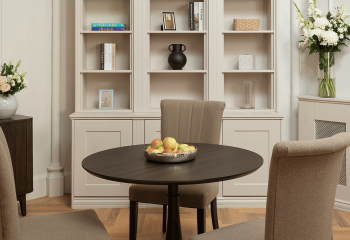More About Shopping Addiction Treatment Centers
Shopping addiction, sometimes called compulsive buying disorder or oniomania, is a behavioral addiction characterized by an excessive and uncontrollable urge to shop or make purchases. This addiction leads to negative consequences in the person’s life, including straining personal relationships due to excessive spending. Shopping addiction is similar to other behavioral addictions, such as gambling addiction and substance abuse.
Currently, some organizations like the American Psychiatric Association do not recognize compulsive buying disorder. Variations of the disorder existed in previous versions of their Diagnostic and Statistical Manual of Mental Disorders, but the newest edition called the DSM-5 excludes it. Unfortunately, the lack of inclusions leads to little understanding regarding the disorder. Reports claim the condition affects approximately 5.8 percent of Americans with compulsive buying disorder, and it is prevalent in many other countries as well.
Signs of Shopping Addiction
Signs that you may have a shopping disorder include:
- Compulsive buying, especially when items are not needed.
- Feelings of euphoria while spending money.
- Feelings of guilt, shame or embarrassment after shopping.
- Consistently spending over your budget.
- Uncontrollable spending.
- Attempting to hide the problem (hiding purchases, destroying credit card bills, etc.).
- Isolation from loved ones.
- Frequent lying or intentional manipulation of loved ones to continue shopping.
- Continuing to shop despite the consequences.
- Shopping to alleviate negative emotions, such as anger, sadness or depression.
- Exhibiting withdrawal symptoms of discomfort, sadness, and anxiety when credit cards or other sources of money are taken away.
- Preoccupation with money, store sales and making purchases.
When identifying the symptoms, it is equally important to note any other conditions that could present as compulsive buying disorder. According to an article in World Psychiatry, a shopping addiction often co-occurs with other disorders, such as substance abuse, impulse control disorders, mood disorders and eating disorders.
For example, people experiencing mania associated with bipolar disorder will often spend money recklessly, but their spending will only occur during these episodes. Additionally, someone abusing a stimulant drug like cocaine may spend wildly while under the influence of the substance. Because of these similarities, one must look at their complete symptoms in order to seek out the most helpful treatment for their situation.
Causes of Shopping Addiction
Shopping addiction can be a complex disorder. Various factors, including personality traits, neurochemical abnormalities, self-regulation difficulties, and environmental factors can influence it. Co-occurring mental health disorders such as anxiety and depression can lead to shopping being used as an unhealthy coping mechanism. Some studies have found a correlation between shopping addiction and traits such as neuroticism, loneliness, and narcissism. People with low self-esteem may be more vulnerable to developing a shopping addiction, as the temporary boost in self-worth from a purchase can be highly appealing.
Media can also influence people with shopping addiction. As trends quickly come and go, people may feel an unhealthy need to keep up with what’s popular. Social pressure can contribute to compulsive buying, especially if friends or family shop excessively. The convenience, accessibility, and constant availability of online shopping have also made it easier for people to engage in excessive shopping behaviors.
Recovery From Shopping Addiction
Early intervention for shopping addiction can help prevent a slew of unwanted long-term effects, including financial problems, strained relationships, and a decline in physical and mental health.
The first step to healing involves acknowledgment and self-awareness. Talk to a mental health professional for guidance, support, and tailored treatment strategies. If you aren’t currently seeing a mental health professional, schedule an appointment with your primary care doctor for a referral to someone who can help. You can also contact the Substance Abuse and Mental Health Services Administration (SAMHSA) National Helpline at 1-800-662-4357 to talk to an agent about treatment in your area.
Treatment for Shopping Addiction
Treatment for shopping addiction typically involves a combination of therapeutic approaches, including cognitive-behavioral therapy (CBT) and psychodynamic therapy. CBT aims to identify and change negative thoughts and behaviors related to shopping, while psychodynamic therapy focuses on exploring underlying emotional issues that may contribute to the addiction. Treatment will help you manage the triggers that lead to your compulsive shopping. You may also develop an achievable budget based on your income, expenses, and savings goals.
In your recovery journey, you’ll likely join a support group, like Spenders Anonymous (SA). Sharing experiences and receiving support from others who understand your struggles can be immensely helpful.
How to Help Someone with a Shopping Addiction
If you know someone with a shopping addiction, you can support them by allowing them to express their feelings and thoughts without interruption or judgment. Create a safe and supportive environment where they feel comfortable sharing their experiences.
Encourage this person to seek professional help. Offer to help them find resources or accompany them to appointments. You can also learn more about compulsive buying disorder to better understand what they’re going through. You may find this through online research or by asking your primary care practitioner how you can best help your loved one. This knowledge can help you provide appropriate support.














































































































